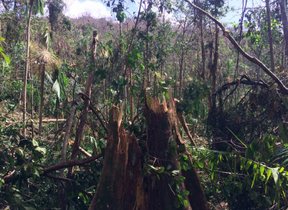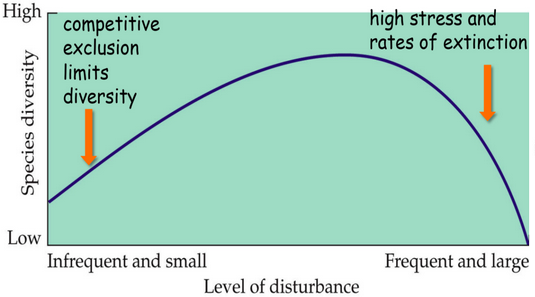2.5: Natural disruptions to ecosystems
1/3
There's no tags or description
Looks like no tags are added yet.
Name | Mastery | Learn | Test | Matching | Spaced |
|---|
No study sessions yet.
4 Terms
Disturbance
An event, caused by physical, chemical, or biological agents, resulting in changes in population size or community composition.
Natural examples: hurricanes, ice storms, tsunamis, tornadoes, earthquakes, volcanic eruptions, and forest fires
Anthropogenic examples: human settlements, agriculture, water or pollution, deforestation, mining, climate change

Resistance
A measure of how much a disturbance can affect flows of energy and matter in an ecosystem.
If a disturbance decreases one population, but allows another to flourish so that NPP remains the same, the ecosystem has high resistance.
Resilience
The rate at which an ecosystem returns to its original state after a disturbance.
If an ecosystem is damaged by an event (such as drought), but returns to its original state the following year it is highly resilient.
Intermediate disturbance hypothesis
The hypothesis that ecosystems experiencing intermediate levels of disturbance are more diverse than those with high or low disturbance levels
Some disturbance is natural and may be necessary for diversity
Frequent disturbance could lead to complete loss of populations and allows fast-growing species to dominate
Infrequent disturbance allows competitive species to dominate
